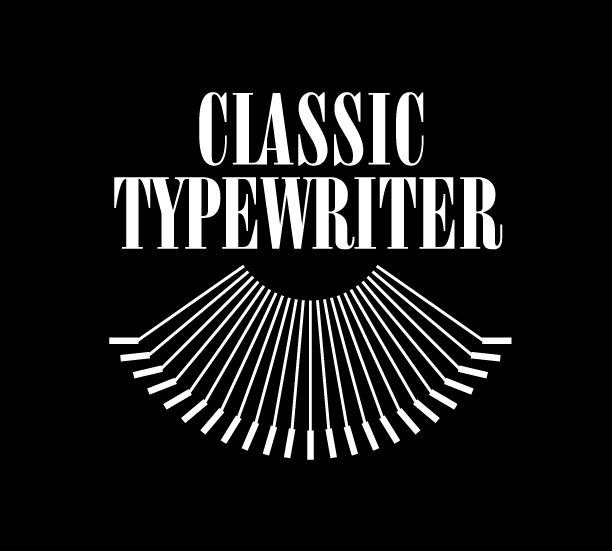The Unsung Hero of Typewriting: Exploring Typewriter Ribbon Types
1930’s Smith Corona with original vintage metal ribbon spools. (which I love to include wherever possible).
For typewriter enthusiasts, the typewriter ribbon might seem like a small detail in the grand scheme of the machine, but it’s an essential component that plays a pivotal role in the typing experience. From the early days of typewriting to the modern revival of typewriters, ribbons have evolved, offering different materials, formats, and uses. Let’s delve into the fascinating world of typewriter ribbons, examining their history, variations, and the unique qualities they bring to the art of writing.
A Brief History of Typewriter Ribbons
The typewriter ribbon—a simple, inked strip of fabric—has been a part of typewriters since their invention in the 19th century. Christopher Latham Sholes, the inventor of the first practical typewriter, included a ribbon mechanism in his 1873 design. Early ribbons were made of cloth, typically cotton or silk, and coated with ink that transferred to paper upon the strike of a typebar.
The basic design of the ribbon has remained largely unchanged, but the materials and ink formulations have advanced. In the mid-20th century, manufacturers began introducing nylon ribbons, which offered greater durability and a smoother typing experience. Later, carbon ribbons—primarily used in daisy-wheel and electronic typewriters—provided sharper, more precise text but were single-use and lacked the reusability of fabric ribbons.
Types of Typewriter Ribbons
Today, typewriter ribbons are available in several formats and materials, each with distinct advantages and drawbacks. Here’s an overview:
1. Fabric Ribbons:
Fabric ribbons, made of cotton, silk, or nylon, are the most common type used in vintage and manual typewriters.
Cotton Ribbons: Known for their classic appeal, cotton ribbons provide a slightly textured imprint, evoking the charm of early typewriting. They’re durable but can dry out if not stored properly.
Silk Ribbons: Silk ribbons were once the premium choice, prized for their smooth ink distribution and rich black tones. However, they’re less common today due to cost and availability.
Nylon Ribbons: Lightweight and durable, nylon ribbons are a modern favorite. They’re less prone to drying out and often produce sharper text than cotton ribbons.
2. Carbon Ribbons:
Carbon ribbons are coated with a layer of carbon ink that transfers to the paper under pressure.
Pros: These ribbons create crisp, high-contrast text and are ideal for archival-quality documents.
Cons: They’re single-use and non-reversible, making them less eco-friendly than fabric ribbons.
3. Multi-Colored Ribbons:
Primarily used for bookkeeping or artistic purposes, these ribbons feature black and red (or other color) sections. Switching between colors allows for highlighting specific text, such as debits and credits in accounting.
Pros and Cons of Ribbon Materials
Choosing the right ribbon depends on your typewriter model and the aesthetic or functional qualities you prioritize:
Durability: Nylon ribbons last longer and resist drying out, making them ideal for frequent typists. Cotton ribbons, while charming, may require more maintenance.
Text Quality: For sharp and precise text, carbon ribbons are unmatched. Fabric ribbons offer a softer look, which can enhance the nostalgic appeal of your writing.
Eco-Friendliness: Fabric ribbons can be re-inked, extending their lifespan and reducing waste. Carbon ribbons, while effective, are disposable and contribute to landfill waste.
Famous Writers and Their Thoughts on Ribbons
Typewriter ribbons have even found their way into the musings of literary icons. Jack Kerouac, known for his furious typing sprees, once quipped, “The ribbon was always worn thin by the time I finished a novel. It felt like the machine itself was exhausted.”
Mark Twain, an early adopter of the typewriter, reportedly said, “A good ribbon is worth its weight in gold. A bad one? A waste of time and paper.” While the authenticity of the quote is debated, it underscores the importance of quality in the writing process.
Even Sylvia Plath, whose typewriter is legendary among her fans, wrote in her journals about replacing ribbons: “The act of threading a fresh ribbon feels like preparing for a new chapter of creativity. A rebirth, of sorts.”
Tips for Ribbon Care
To extend the life of your typewriter ribbon:
Store unused ribbons in a cool, dry place away from direct sunlight.
If your fabric ribbon begins to dry out, consider re-inking it with a suitable typewriter ribbon ink.
Always check compatibility when purchasing new ribbons to ensure they fit your typewriter model.
Conclusion
The humble typewriter ribbon is much more than an accessory; it’s a critical link between your words and the page. Whether you prefer the vintage charm of a cotton ribbon, the sharp precision of a carbon ribbon, or the practicality of nylon, the right choice can elevate your typing experience. As you type away, perhaps you’ll find inspiration in the thought that your ribbon, like your words, leaves an indelible mark on the world.

